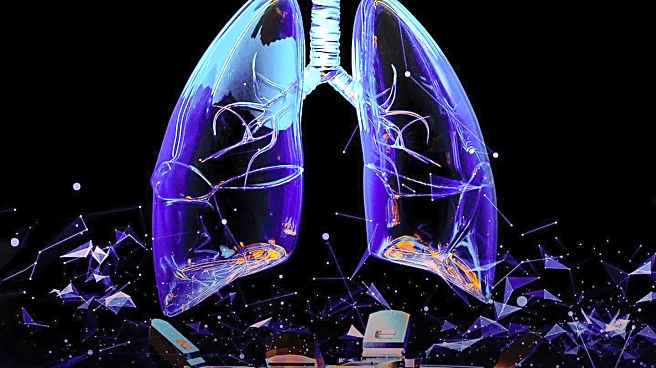What is the story about?
What's Happening?
Scientists at the University of Saskatchewan have developed a 3D lung tissue model using living cells, which could significantly improve the study and treatment of lung diseases such as tuberculosis, COVID-19, asthma, COPD, and pulmonary fibrosis. Traditional methods using 2D and animal models have limitations in accurately reflecting human lung behavior. The new model, created with bioinks containing real living cells, offers a more realistic environment for testing therapies and understanding diseases. This advancement could lead to lab-grown lungs for organ transplants in the future.
Why It's Important?
The development of 3D printed lungs represents a potential breakthrough in medical research and treatment. By providing a more accurate model of human lungs, researchers can test therapies in a manner that closely mimics human responses, potentially increasing the success rate of new treatments reaching the market. This innovation could lead to personalized therapy development and improve the understanding of complex lung diseases. The ability to grow lungs in a lab could eventually address the shortage of organs available for transplantation, offering hope to patients with severe lung conditions.
What's Next?
The research team plans to further refine the 3D lung model to fully replicate the complex structure and function of human lungs. They aim to use these models to study various respiratory infections and develop patient-specific treatments. Over the next 5-10 years, the use of these models is expected to expand significantly, aiding in the discovery and testing of novel therapeutics. The ultimate goal is to grow whole lungs in the lab for transplantation, pending future studies and technological advancements.
Beyond the Headlines
The ethical implications of using 3D printed lungs are significant, as they offer a humane alternative to animal testing. This technology could also lead to a paradigm shift in how lung diseases are studied and treated, potentially reducing healthcare costs and improving patient outcomes. The long-term impact could include a transformation in organ transplantation practices, with lab-grown organs becoming a viable option.
AI Generated Content
Do you find this article useful?














